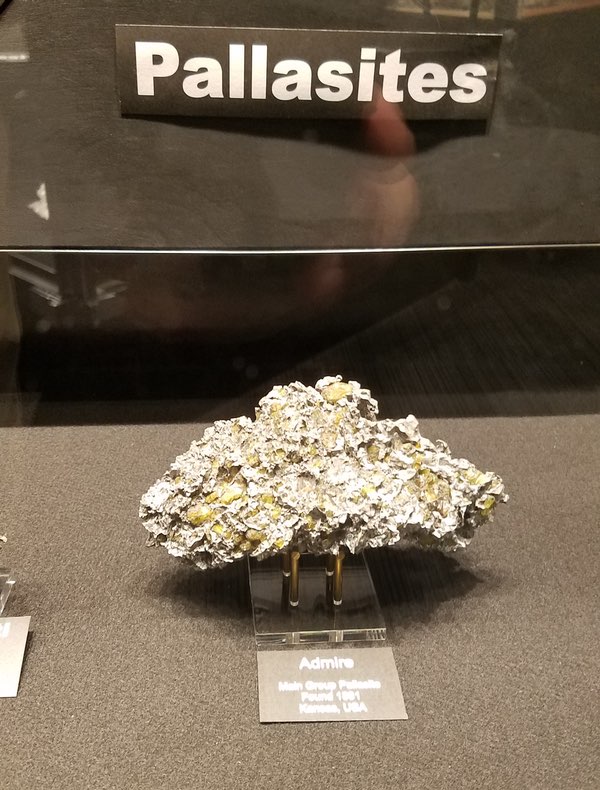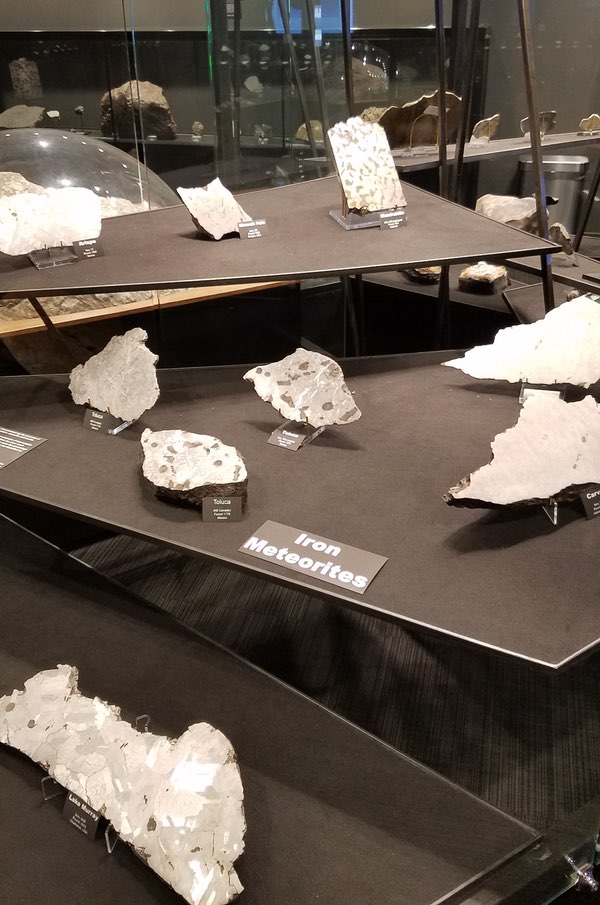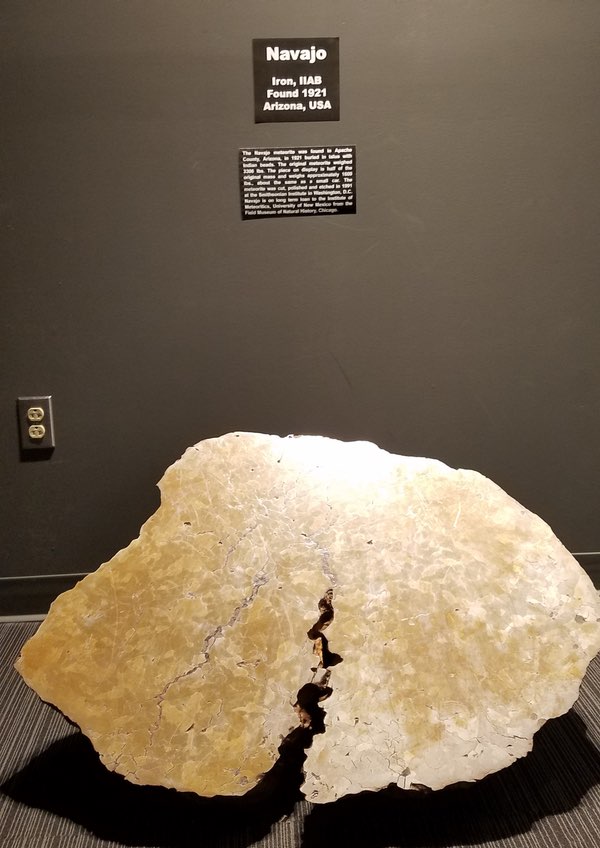Interplanetary “litter” on the Space Trail: University of New Mexico’s Meteorite Museumby Joseph T. Page II
|
| After overcoming the brief disappointment that these Martian rocks were not huge and did not contain Technicolor aliens from Mars, the collection is nonetheless quite impressive. |
IOM’s research areas include study of planetary materials, high pressure/high temperature experiments, simulations of Martian surface processes, and impact and cratering studies. One of the IOM’s outreach activities with the public include a wonderful Meteorite Museum, showcasing some “falls” and “finds” that have made their way to Earth. (“Falls” are observed during re-entry, while “finds” are samples found without seeing it “fall.”)
 A collection of Pallasites, meteorites consisting of equal portions of olivine and iron. Pallasites are among the rarest meteorites, with just over 60 discovered to date. (credit: J. Page) |
The Meteorite Museum at the University of New Mexico opened in 1974 and hosts thousands of visitors each year. The museum itself is a one-room exhibit hall, located on the first floor of Northrop Hall, home of IOM. As listed on their website, the museum’s highlight is a one-ton piece of a stony meteorite that fell on Norton County, Kansas, in 1948. That large piece aside, IOM’s collection houses over 600 meteorites, with a number on display in the museum.
Samples of Martian meteorites line the back wall of the exhibit room. After overcoming the brief disappointment that these Martian rocks were not huge and did not contain Technicolor aliens from Mars, the collection is nonetheless quite impressive. To think that these little pieces came from such a far off place, flew millions of kilometers through the vacuum of space, and survived a scorching ride through the atmosphere, is thought provoking.
Another focus of the museum is a sampling of New Mexico meteorites. The state is a great place to find meteorites, especially in dry lake beds of Roosevelt County in the east-central part of New Mexico. A map on the website shows the locations meteorites have been found within the state.
 Various iron meteorites at the Meteorite Museum in Albuquerque, New Mexico. (credit: J. Page) |
During its hours of operation, there is a student docent available for any questions. While their presence is for security (a large meteorite was one stolen from the collection, but later recovered), they are also knowledgeable in the science of meteorites for most questions a visitor might have. One small criticism of the museum is a holdover from its pure science focus: while a few exhibits have text written for the layperson, some information was written for geologists and hardcore meteorite hunters. Explanatory text, graphics, or additional information about the formation of meteorites would further the content. A solution would be incorporation of QR scan codes to link the exhibit to multimedia on IOM’s website.
Admission to the UNM Meteorite Museum is free. Hours vary based on the University of New Mexico’s school year calendar; check the website for more information. Metered parking is located a short distance away from the building, so be sure to judge your trip time accordingly. Unless you’re a hard (iron) core aficionado, an hour is plenty of time to view the collection.
